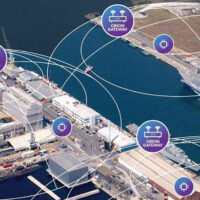Military asset management solutions allow armed forces to efficiently manage a wide range of critical items, including weapons, vehicles, tools, documents and parts.
They enable personnel to gain an up-to-date view of stock levels, thus facilitating intelligent inventory planning and supply chain management. This in turn ensures efficient allocation of resources and identification of wastage and also allows forces to utilize just-in-time purchasing strategies if inventory space is limited.
Military Asset Software
Military base asset management software may also keep track of the condition of larger and more complex items such as vehicles, aircraft and machinery, and automatically flag up when part replacements or scheduled maintenance are due.
It may also keep historical records of inspections and maintenance, as well as disposal times for perishable goods. These features help armies, navies, air forces and other departments to keep critical assets at maximum readiness and minimize downtime.
Asset management software may integrate or interface with tools for military asset tracking. These solutions may utilize hardware methods such as barcodes, QR codes, RFID tags, cellular modems or GPS receivers in order to provide last-known or real-time location information for an asset. This information can be stored in a database for easy retrieval and tracking.
Inventory management & integration with higher-order systems
Asset management software may also integrate with higher-order systems such as enterprise resource planning (ERP) systems and geographic information systems (GIS), allowing for inter-departmental interoperability and collaboration as well as access over large geographical areas.
Military asset management solutions typically provide functions such as data analysis and automated reporting, which are crucial for quality compliance and audits, as well as identifying and monitoring trends. Software may be cloud-based or installed on dedicated servers, and may allow relevant personnel and stakeholders to access information remotely via cellular phones and other mobile devices.















